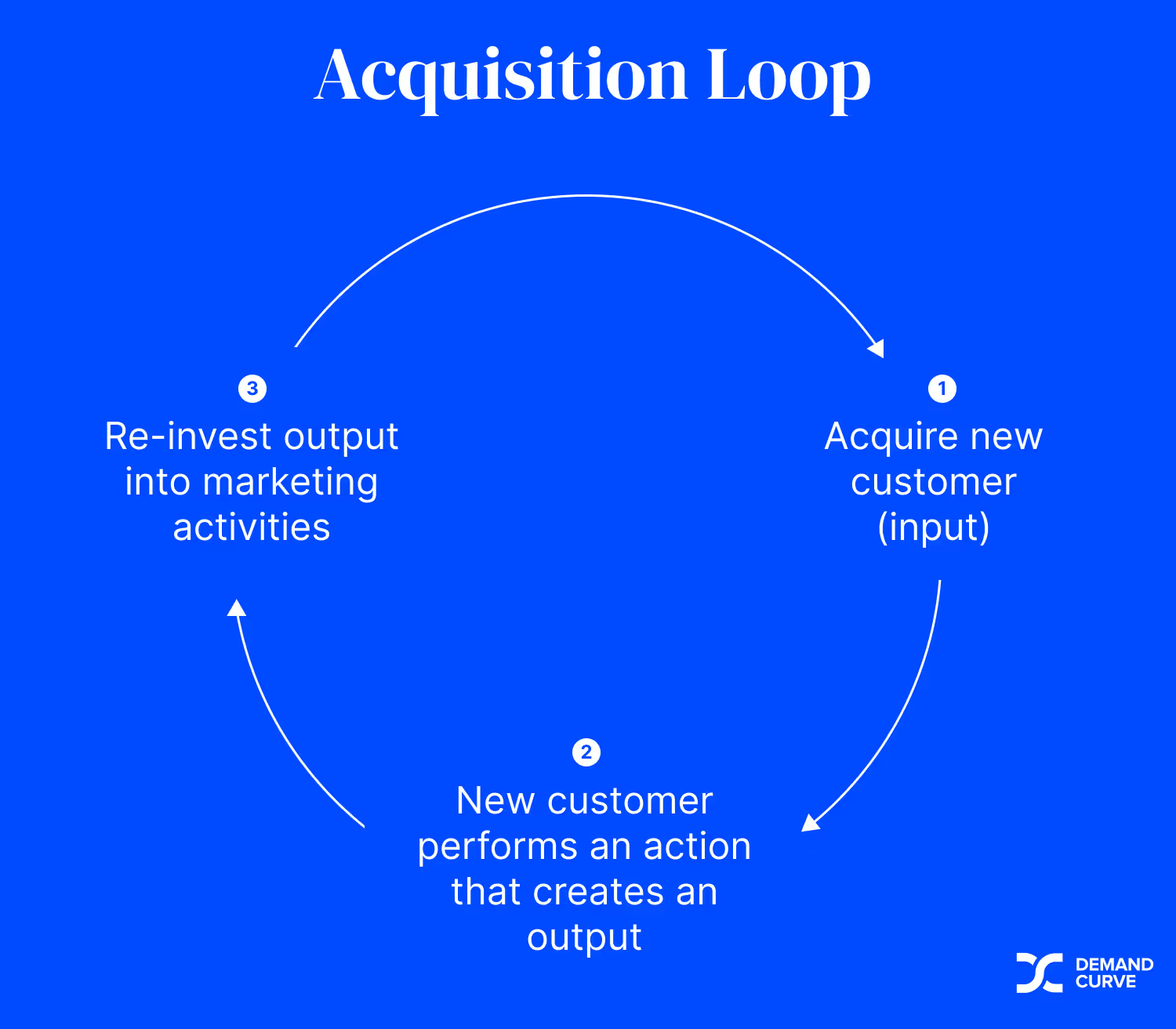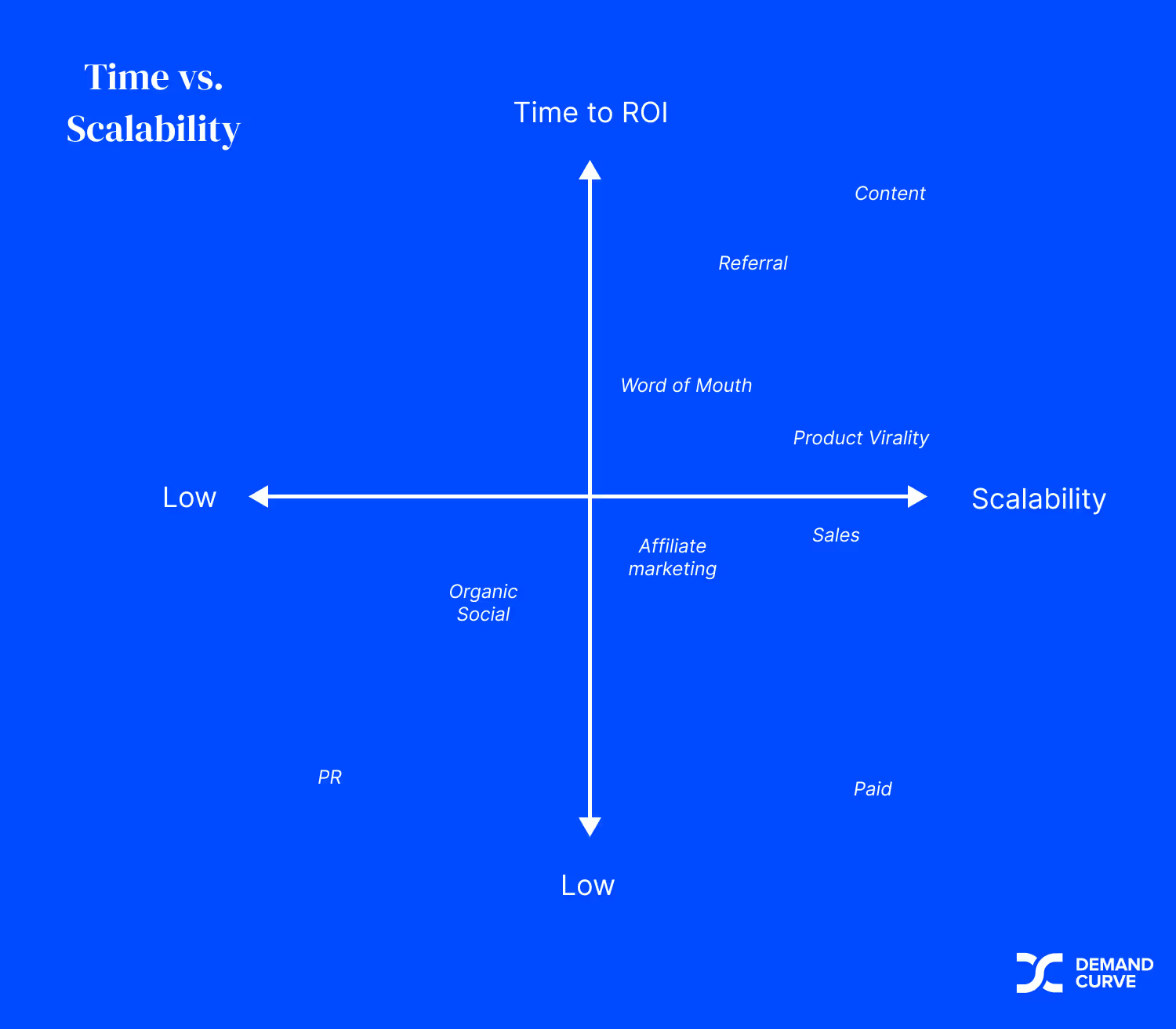Scalable vs. Unscalable Channels
In the previous section, we discussed the two ways startups acquire customers: product-led growth and channel-led growth. The primary focus of this program will be on the channel-led model.
In this section, we'll dive deeper into channel-led growth and the differences between scalable and unscalable channels. More specifically, we're going to pull back the curtain to show you that there are far fewer ways to scale customer acquisition than most people think.
This is important to understand for a few reasons:
- It helps to demystify growth and acquisition. Many founders and new marketers find themselves overwhelmed by the seemingly endless array of marketing channels, tactics, and "best practices."
- It will help you stay focused early on. Fear of missing out is real when you think there are hundreds of channels you could be using. Knowing that 95% of them aren't a fit for your business makes it much easier to focus.
- You'll produce meaningful results much faster. Many startups waste precious time and resources on channels that were destined for mediocre results from the start. Understanding the potential of each channel will ensure that you're not spending time on the wrong opportunities.
We'll now walk you through why there are so few scalable channels and what sets them apart from their unscalable counterparts.
Scalable channels
There are many channels, but only a few of them are scalable. These types of channels have two critical things in common:
- High volume: They allow you to reach a lot of people. You can acquire many customers and use the channel for a long time.
- Compounding/looping effects: They have a self-fueling mechanism that allows you to repeatedly reinvest the outputs of the channel (revenue or new users) right back into it to produce more growth.
Channels that have these two characteristics are called scalable channels. If they don't have both characteristics, we refer to them as unscalable channels.
Let's take a closer look at high volume and compounding.
High volume
The first critical factor is a channel's sheer reach.
Platforms like Facebook and Amazon have made it easy for startups to use paid advertising to reach millions of people. Search engine marketing allows you to tap into Google's billions of daily search queries. Previously, that kind of scale was possible only through TV, magazines, or national news coverage.
That said, there simply aren't that many high-volume platforms out there. You’ll read a lot about Google, Facebook, and Amazon in this program for a reason: They’re among a small selection of platforms that reach a high volume (billions) of users.
If a key criteria of scalability is high volume, should you ignore smaller channels? Not at all. For early-stage startups, lower-volume "unscalable" channels can be effective and often necessary to build momentum. We'll explain this more in our discussion of unscalable channels below.
If you're already acquiring customers and you're ready to accelerate growth, scalable channels are going to be critical to your success.
Compounding
The second characteristic we look for when choosing a channel is its ability to compound your marketing efforts.
Compounding simply means that each new customer or user helps to acquire more customers. This is an acquisition loop, which we covered earlier. It's a key ingredient in the most scalable channels.

Take, for example, organic content marketing on search engines. New visitors come to your site by clicking a link to your blog post. Some will read your post and decide to buy your product. As revenue comes in from these new customers, you can reinvest by paying a writer to create more content, which will help you acquire more customers.
The key: each new customer helps you acquire additional customers.
Unscalable channels
It's worth reiterating that scalable channels aren't the only channels you can use to acquire customers, but they're the only channels that will enable you to build a large company—quickly. There are tons of other channels that can help you grow yet don't match our criteria for scalability. We'll refer to these as unscalable channels.
Some common unscalable channels are:
While unscalable channels alone won't be enough to build a huge business, they can help you gain traction. The following diagram helps to visualize this:

The high-scale channels fall on the far right of the matrix. But if we look closely, we see that nearly all of them, with the exception of paid marketing, take a significant amount of time to generate a return on investment ("Time to ROI"). Unscalable channels can have lower initial investment costs and get you results faster.
And remember, for our product-led strategies (product virality and user-generated content), we're dependent on having a significant number of users in the product to kick-start growth in the first place.
This brings us to the most important reason why unscalable channels matter: Early-stage companies need customers as soon as possible.
Not only do they need the revenue to pay their companies' costs, but startups also need people using the product so they can assess their market-product fit before scaling their growth.
Unscalable channels are useful for later-stage companies too. Eventually, even high-scale channels will begin to saturate. They'll still be effective, but their growth rate will hit a ceiling. Adding unscalable channels is one way to supplement scalable channels.


